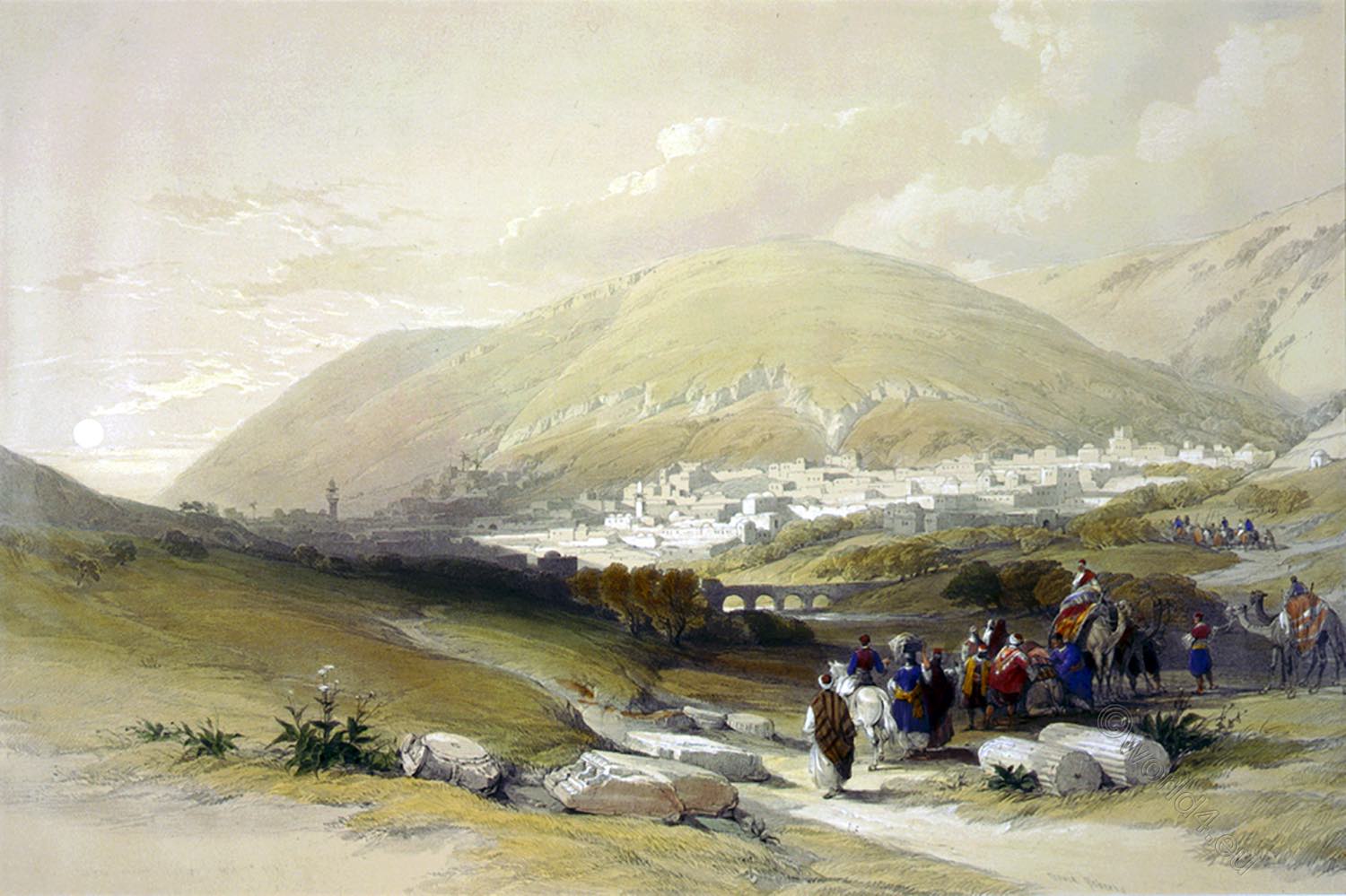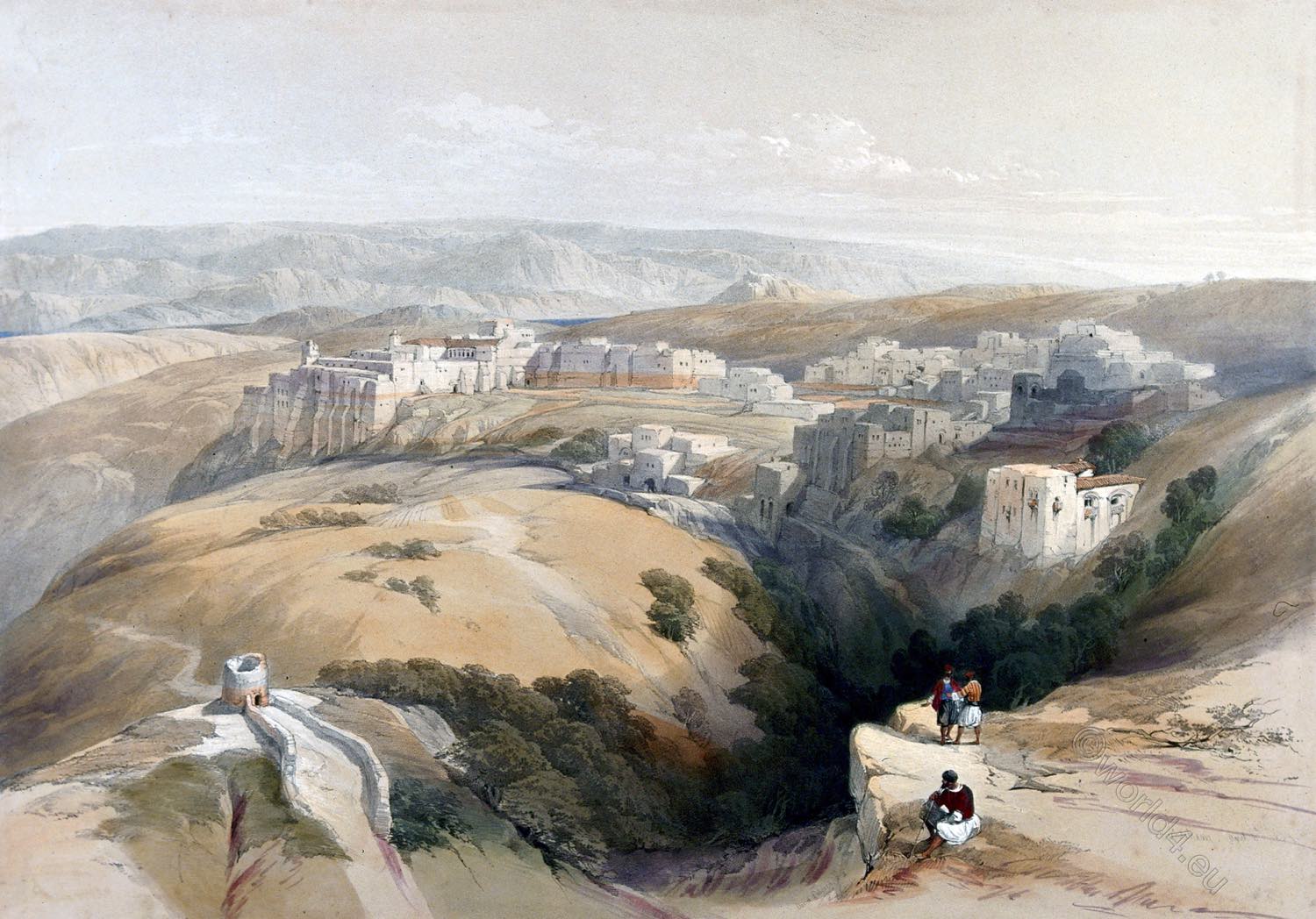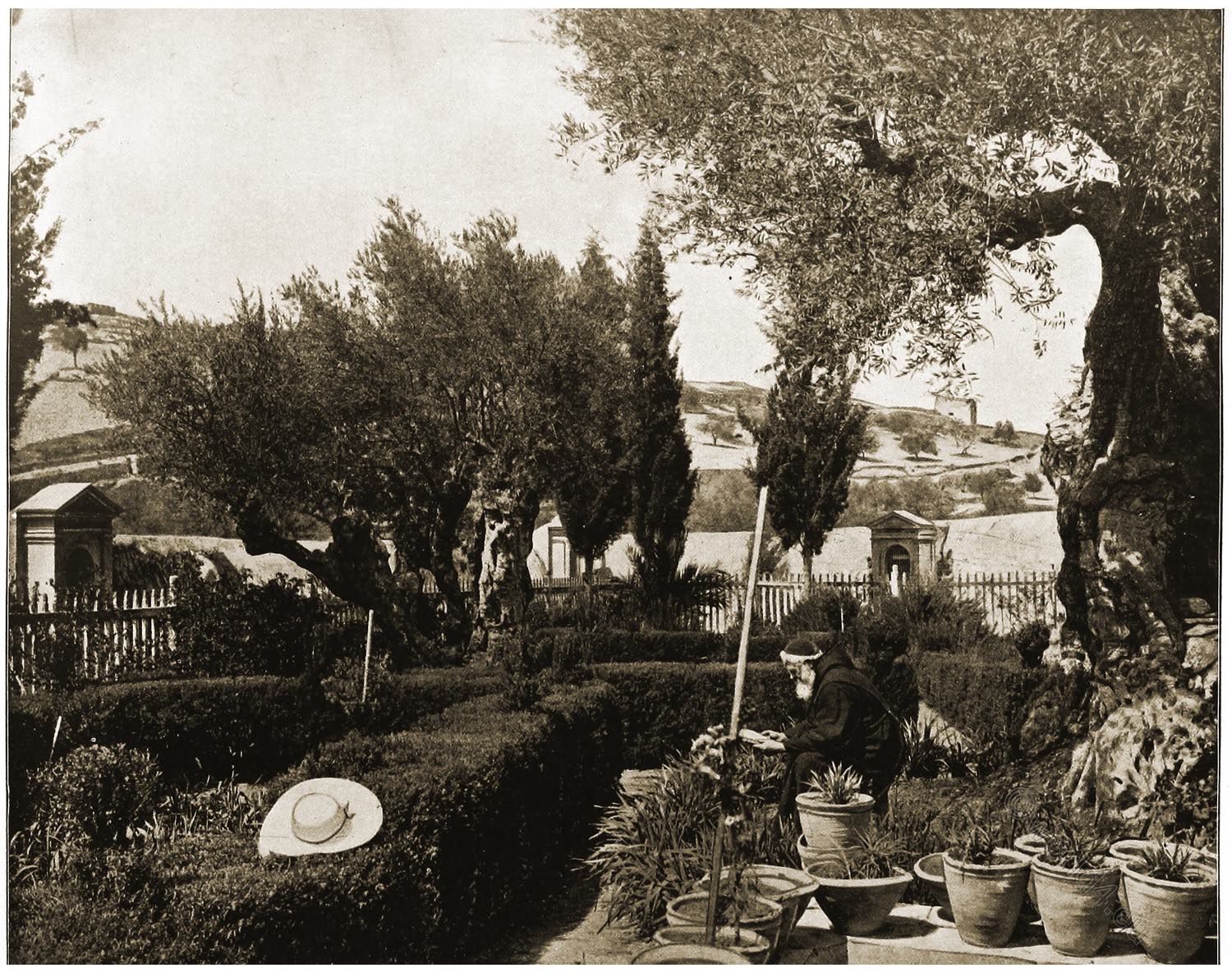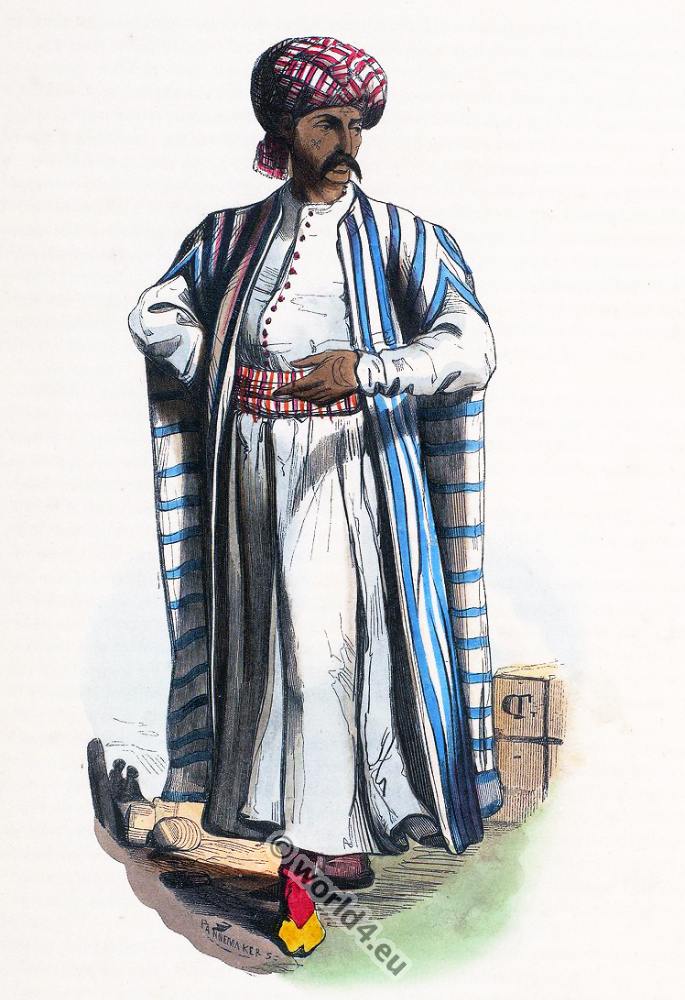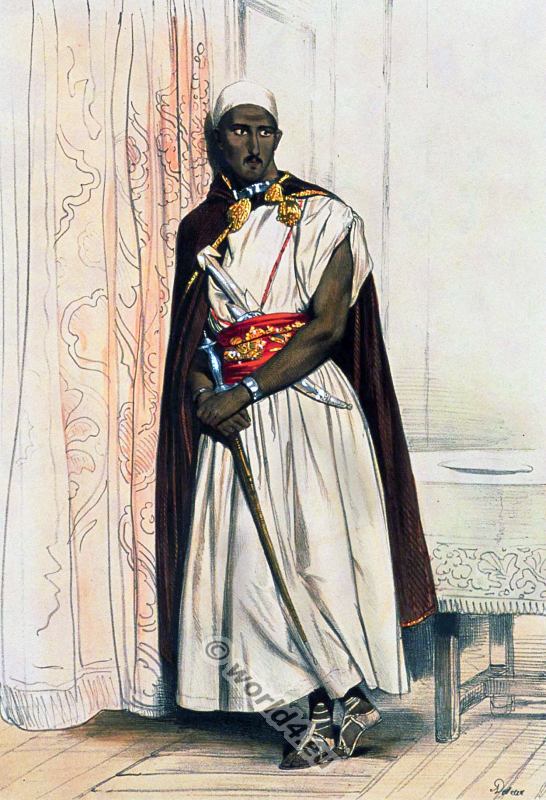
ASIATIC PLATE NO. 5
Palestine.
Herdsmen of the Near East. Shepherd and christian woman.
Palestine, perhaps more than any other country of western Asia, is a confusion of modern and ancient, a conglomeration of Moslems, Christians, and Jews of all sects and types, a babble of tongues, a wild array of costumes. Better known as the Holy Land, it is about twice the size of Vermont, has slightly more than a million inhabitants, and consists of a fertile coastal plain on the Mediterranean, a central portion knoWn as the Plain of Judea, and an eastern section that drops off into the valley of the river Jordan and the Dead Sea. It is an agricultural country and has much potential wealth, depending, of course, on proper irrigation. It is self-governing under the jurisdiction of the English.
The three persons pictured here might be seen walking the streets of Jerusalem today -—though the colourful native costume fast yields to western custom and influence. The man is a shepherd, not a city-dweller of course, but typical enough of the herdsmen of the Near East to be included in this series. His ensemble is rather nondescript and shabby, yet it is rather typical of all Eastern peasant dress. He wears, first, a long cotton tunic, sleeved and reaching to the ankles. It has no pattern to it, resembling more than anything else a night shirt. It pulls on over the head and is embroidered on the hem with coloured stripes.
Over this he wears a similar garment, somewhat shorter but basically the same. It might be made of heavier material (perhaps wool) and be split for a short distance up each side – otherwise it is the same as the undershirt. Over all he wears a crudely tailored coat made from the skins of the sheep he herds. The skins have been sewn together in what forms an interesting pattern of seams. Crude sheep’s wool has been used to trim the cuffs, and the hem and neck have been’ decorated with a thick coil of two-coloured braid.
He has covered his head with a combination of colored materials to form a turban. His crude home-made shoes are probably of goat or kid skin with camel hide soles.
With the exception of the felt skullcap and the multicolored sash, the little boy is dressed almost exactly like the shepherd.
The woman wears what is referred to as the “Bethlehem costume”. Its most characteristic feature is the headdress – the “tarboosh” *). It is the symbol of the married woman and is usually accompanied by a veil hanging behind. It is a high fez-like hat elaborately spangled with coins and chains. It is supplemented by two chains hanging from either side and joining to fall on the breast in a pendant. It is worn high on a simple coiffure. The hair is merely drawn back from the face and hangs behind. The tarboosh is then pinned to the hair and is worn at all times.
The gown is of wool, beautifully embroidered, cut full in the sleeve, and bound at the waist with a gay and heavy sash. A small, tight, comparatively long-sleeved jacket of velvet, likewise prettily embroidered, completes an unusual, luxuriantly Oriental ensemble. Her simple shoes are probably made of goatskin.
*) Also tarbush or tarbouche from Arabic tarbūsh


